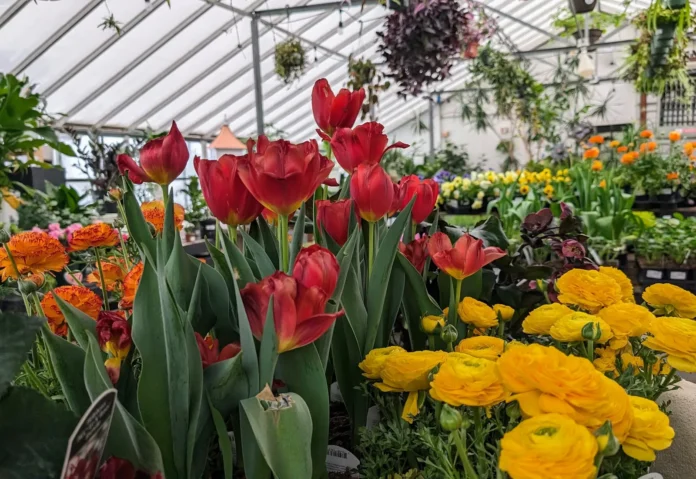Whether you’re a seasoned gardener or a green-thumbed novice, choosing the right plant pot is crucial for the health and beauty of your plants. With a myriad of options available, understanding the different types of plant pots can help you make the best choice for your greenery. In this guide, we’ll explore various plant pot styles, materials, and their unique benefits to help you achieve potting perfection.
1. Clay Pots
Clay pots, often known as terracotta pots, are classic choices for gardeners. Made from natural clay and fired in a kiln, these pots offer a rustic charm that complements many plants. They come in various sizes and shapes, from small pots for succulents to large ones for trees.
Advantages:
- Breathability: Clay pots are porous, allowing air and moisture to pass through the walls. This helps prevent root rot by ensuring good drainage and aeration.
- Temperature Regulation: The natural material helps keep soil temperature stable, protecting plant roots from extreme temperature fluctuations.
Disadvantages:
- Weight: Clay pots can be heavy, making them less ideal for hanging or portable setups.
- Breakage: They are prone to cracking or breaking if dropped or exposed to extreme temperatures.
2. Plastic Pots
Plastic pots are a favored option for many due to their lightweight construction and durability. Produced through plastic toll processing, these pots come in a variety of colors and sizes, making them a common choice in nurseries and among home gardeners.
Advantages:
- Lightweight: Plastic pots are easy to move, making them perfect for large plants or hanging baskets.
- Cost-Effective: They are generally more affordable than other materials.
- Durability: Plastic pots are resistant to breaking and can withstand various weather conditions.
Disadvantages:
- Limited Breathability: Plastic does not allow air exchange like clay, which can lead to root rot if drainage is not properly managed.
- Environmental Impact: Many plastic pots are not biodegradable, raising environmental concerns.
3. Ceramic Pots
Ceramic pots are similar to clay pots but are usually glazed, which gives them a shiny, decorative finish. They come in various colors, patterns, and sizes, making them an attractive option for both indoor and outdoor use.
Advantages:
- Aesthetic Appeal: Ceramic pots offer a wide range of designs and colors that can enhance the look of your garden or home.
- Good Insulation: The glaze on ceramic pots provides a barrier that helps regulate soil temperature.
Disadvantages:
- Weight: Like clay pots, ceramic pots can be heavy and prone to breakage.
- Cost: They are generally more expensive than plastic or basic clay pots.
4. Metal Pots
Metal pots, often made from materials like steel, copper, or zinc, provide a sleek, modern look for plant display. They can be found in various finishes and sizes, from small decorative pots to large planters.
Advantages:
- Durability: Metal pots are sturdy and long-lasting.
- Design Variety: They come in many stylish finishes and can add a contemporary touch to your plant arrangement.
Disadvantages:
- Heat Retention: Metal pots can heat up quickly in direct sunlight, potentially harming plant roots.
- Weight: Depending on the metal, these pots can be quite heavy.
5. Wooden Pots
Wooden pots offer a natural, rustic aesthetic that blends well with outdoor gardens and contemporary indoor spaces. Typically made from treated wood or reclaimed timber, they provide a unique look.
Advantages:
- Natural Insulation: Wood helps to insulate plant roots from temperature extremes.
- Eco-Friendly: When made from sustainably sourced or reclaimed wood, these pots can be environmentally friendly.
Disadvantages:
- Durability: Wood can rot over time, especially if not properly treated or maintained.
- Maintenance: Wooden pots require regular treatment to prevent decay and damage.
6. Hanging Pots
Hanging pots, often made from materials like plastic, metal, or macramé, are designed to be suspended from hooks or brackets. They are ideal for plants that thrive in hanging environments, such as ivy or trailing succulents.
Advantages:
- Space-Saving: They are perfect for small spaces or areas with limited floor space.
- Aesthetic Appeal: Hanging pots can add visual interest and create a lush, layered look in your garden or home.
Disadvantages:
- Weight Limits: They can be limited by the strength of the hook or bracket used to support them.
- Watering: Hanging pots can be challenging to water evenly without a mess.
In Conclusion
Choosing the right plant pot involves considering your plant’s needs, the pot’s material, and your aesthetic preferences. Clay and ceramic pots offer classic beauty and good insulation, while plastic pots provide affordability and ease of use. Metal and wooden pots add a touch of modern or rustic charm but may require more care. Hanging pots offer a creative way to utilize vertical space and display your greenery.

